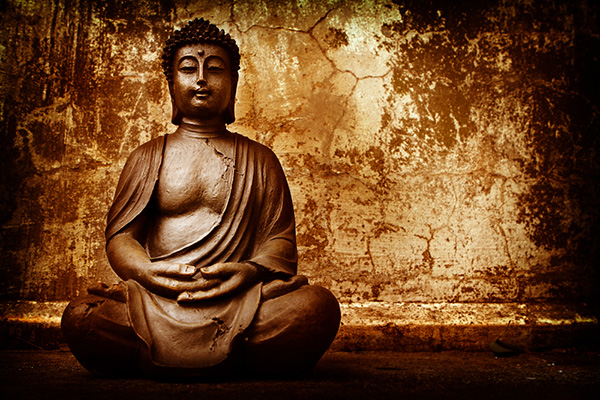Nirvana and the concept of freedom in Buddhism

The word nirvana is so widespread for English speakers that its true meaning is often lost. The word has been adopted to mean "bliss" or "tranquility". Nirvana is also the name of a famous American grunge band, as well as many consumer products, from bottled water to perfume. But what is it? And how does it fit Buddhism?
The meaning of Nirvana
In the spiritual definition, nirvana (or nibbana in pali) is an ancient Sanskrit word meaning something like "extinguishing", with the connotation of extinguishing a flame. This more literal meaning has led many Westerners to suppose that the goal of Buddhism is to cancel itself. But that's not what Buddhism or nirvana is at all. Liberation involves the extinction of the condition of samsara, the suffering of the dukkha; Samsara is generally defined as the cycle of birth, death and rebirth, although in Buddhism this is not the same as the rebirth of discrete souls, as it is in Hinduism, but rather a rebirth of karmic tendencies. Nirvana is also said to be liberation from this cycle and dukkha, the stress / pain / dissatisfaction of life.
In his first sermon after his enlightenment, the Buddha preached the Four Noble Truths. Basically, truths explain why life stresses us and disappoints us. The Buddha also gave us the remedy and the path to liberation, which is the Eightfold Path.
Buddhism, therefore, is not so much a belief system as a practice that allows us to stop fighting.
Nirvana is not a place
So, once freed, what happens next? The various schools of Buddhism understand nirvana in several ways, but generally agree that nirvana is not a place. It is more like a state of existence. However, the Buddha also said that anything we could say or imagine about nirvana would be wrong because it is completely different from our ordinary existence. Nirvana is beyond space, time and definition, and therefore language is by definition inadequate to discuss it. It can only be experienced.
Many scriptures and commentaries speak of entering nirvana, but (strictly speaking), nirvana cannot be entered in the same way we enter a room or in the way we might imagine entering heaven. Theravadin Thanissaro Bhikkhu said:
"... neither samsara nor nirvana is a place. Samsara is a process of creating places, even whole worlds (this is called becoming) and then wandering about them (this is called birth). Nirvana is the end of this process. "
Of course, many generations of Buddhists have imagined that nirvana was a place, because the limitations of language give us no other way of talking about this state of being. There is also an old popular belief that one must be reborn as a male to enter nirvana. The historical Buddha never said anything of the sort, but popular belief was reflected in some of the Mahayana sutras. This notion was very emphatically rejected in the Vimalakirti Sutra, however, in which it is made clear that both women and lay people can become enlightened and experience nirvana.
Nibbana in Theravada Buddhism
Theravada Buddhism describes two types of nirvana, or Nibbana, since the Theravadin usually use the word Pali. The first is "Nibbana with remains". This is compared to the embers that remain warm after the flames have gone out and describes an illuminated living being or an arahant. The arahant is still aware of pleasure and pain, but is no longer tied to them.
The second type is the parinibbana, which is the final or complete nibbana that is "inserted" at death. Now the embers are fantastic. The Buddha taught that this state is neither existence - because what can be said to exist is limited in time and space - nor non-existence. This apparent paradox reflects the difficulty that arises when ordinary language tries to describe a state of being that is indescribable.
Nirvana in Mahayana Buddhism
One of the distinctive features of Mahayana Buddhism is the vow of the bodhisattva. Mahayana Buddhists are dedicated to the supreme enlightenment of all beings and therefore choose to remain in the world to help others rather than to switch to individual enlightenment. In at least some Mahayana schools, since everything exists, "individual" nirvana is not even considered. These schools of Buddhism concern life in this world very much, not abandonment.
Some schools of Mahayana Buddhism also include teachings that samsara and nirvana are not separate. A being who has realized or perceived the emptiness of phenomena will realize that nirvana and samsara are not opposites, but completely pervade. Since our intrinsic truth is the Buddha Nature, both nirvana and samsara are natural manifestations of the empty intrinsic clarity of our mind, and nirvana can be seen as the true purified nature of samsara. For more information on this point, see also "The Heart Sutra" and "The Two Truths".